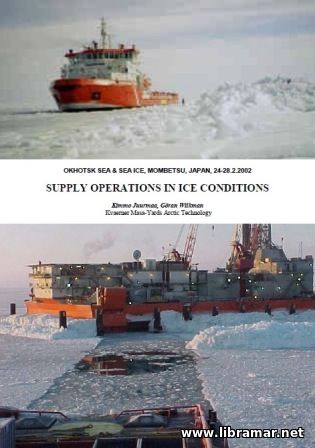 It is quite clear that any activities taking place in adverse weather conditions, especially in ice, imply higher level or danger. It means that the crew dealing with supply operations in such conditions must have some additional knowledge in subject field. The present publication briefly describes the offshore supply operations in Caspian Sea.
The readers will get to know how the local fleets have been developed and what should now be expected. The possibilities in other areas have also been discussed, being supplemented with some examples of possible ship concepts. Even though this is just a compact booklet but it still may provide some useful information for the people with the practical working interest in the offshore activities there in the Caspian area.
The ice creates a serious challenge to the offshore exploration of hydrocarbons and their production; there are additional requirements in comparison to the operations on the open water. Note that the ice conditions in different sea will differ and the quality and composition of the supply fleet will also be different. The ships engaged in supply operations in ice conditions today are normally multi-functional...
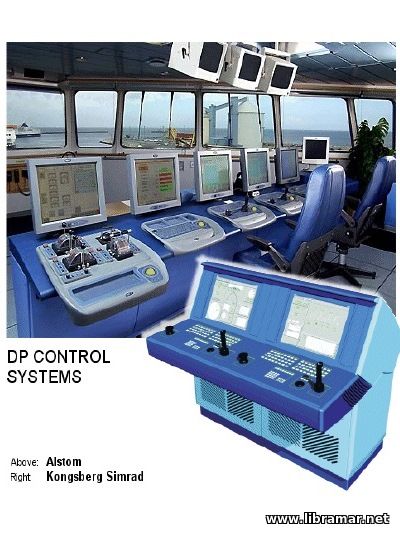 This is a very good training manual with the content developed by the Kongsberg specialists. It contains valuable information of the DP systems. We all know that DP technologies are developing very rapidly and maintaining and controlling such system requires high level of knowledge. Go through this manual and you will significantly improve your DP control skills.
Today, the demand of the offshore industry have eventually resulted in a set of completely new technical requirements. In addition, as the industry moves toward the deeper waters and also difficult locations from the environmental point of view (harsh weather conditions that may be expected at particular location), plus taking into account that only environmental-friendly methods shall be considered, this all brought about a significant development in the field of the DP technology and associated techniques.
Long story short, we do recommend you to have a look in this publication and we are quite sure that you will learn something new even if you are the professional and experienced operator of the DP system.
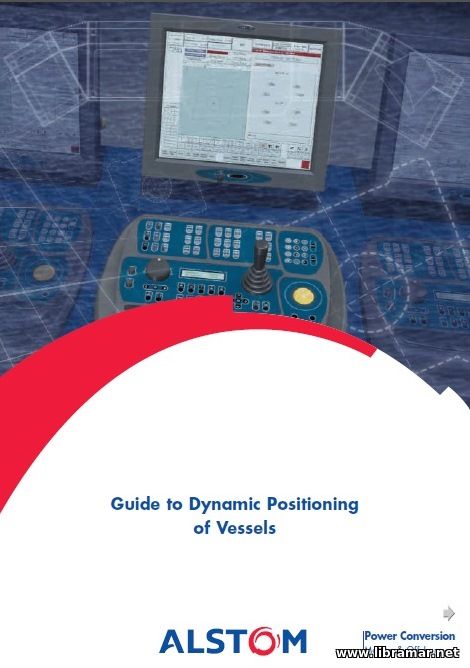 The fundamental purpose of the DPS of any ship is the automatic control of the heading and position of the vessel. A more sophisticated definition is to maintain the variations in ship's position and heading within acceptable limits, while achieving minimum thruster activity.
This is the dynamics of a free floating vessel in an offshore marine environment. Then, the control system is covered, providing a review of the control loop of force and moments: sensing: counteraction to force. Generally, forces acting on the vessel and associated moments are environmental plus task related i.e. pipe tension; Operational modes.
Each vessel is supplied with several different modes of operation, with the difference between the modes being the level of control available and how the position, heading speed and set points are generated. The combination of modes provided for a vessel mainly depends upon its role. Thus, a cable laying vessel will need Auto Track mode, which would commonly not be required for in case of a drilling platform...
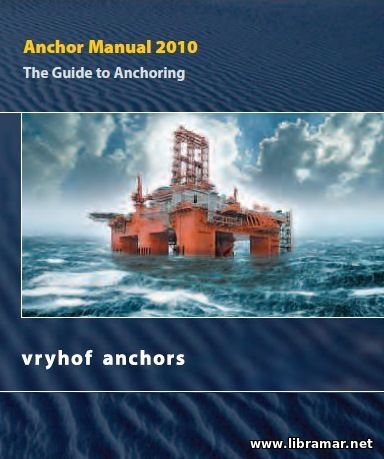 This manual you are now holding in your hands has been intended to serve as a good means of reference for all people dealing with the maintenance, usage, purchase, and repair or any other activities related to the anchors. Although this publication was prepared from one manufacturers standpoint, the information presented inside of course applies to the majority of marine anchors.
It was our ultimate intention and the whole idea of creating this manual to make a small contribution to the successful work of all who work with anchors. The information contained in the pages o this manual is expected to be of great practical use for the crew members involved in anchoring operations, owing to the great professional experience of the people who worked on the content of the present document.
Of course, the authors understand that the total objectivity is impossible even though they have tried to cover the various types of anchors. After all, the theory and mechanics of the process remain same for all anchors and there are only some construction features that make cause the differences.
The book starts with the description of various mooring systems and components followed by a short historical background. Then the authors proceed to the characteristics of the anchors per type, design of the anchors, their holding capacities, soil classification and other aspects considered important enough to be covered.
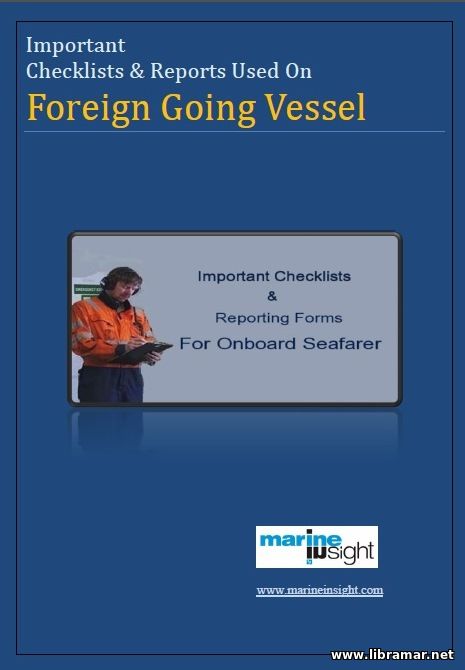 This Marine Insight publication contains the forms/checklists considered most important when reporting and for other practical use by the crew members and officers. There are three main areas that have been covered by the paperwork included in this pack.
The first is general and safety-related, including Safety Committee Meeting, tank opening checklist, PSC (i.e. port state control) inspection report, tank condition report, bunkering checklist, hull failure scenario. The second area is the deck department, and this part of the pack includes such forms and checklists as the bridge before arrival/departure checklists, GMDSS familiarization checklist, United States waters navigation checklist, and stevedore damage report.
Finally, the third area to be covered is the engine department - and here we such docs as generator test report and main engine bearing report, centrifugal pump report and engine before departure checklist, and even the bunker note of protest. We would recommend you to download the complete pack to make sure that all of the papers you might require are readily available at any time.
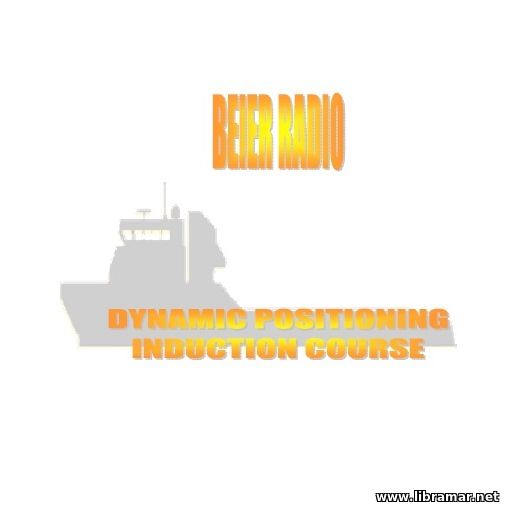 The present DP induction course by Beier Radio has the following important objectives - the first and maybe most important of them is to provide the trainees enrolled with a good and thorough understanding of the DP principles, while the others include the demonstration of the proper setting-up as well as the operating of the various dynamic positioning equipment plus position measuring equipment, assistance in the recognizing and further responding to the warnings, alarms, and info messages received, examination and analysis of the relationships existing there between the dynamic positioning equipment and the ship systems, and even relating of the dynamic positioning operations to the different environmental conditions expected to be faced by the vessel.
The content of this training program was developed on the basis of the professional principles, specified objectives and important practical elements. Some part of the course is directly concerned with the assessment of the DP operator's competence from the shore-based organizations to the vessel...
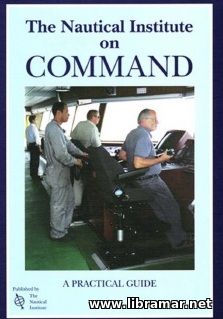 The shipmasters of today and people in command of navy vessels have a truly unique authority differing from the authority of civil servant or, for example, the factory manager. Even though the vessels are under formal jurisdiction of the Flag, they are commonly treated as independent outposts. Therefore both master of the ship and commanding officer are normally expected to make sure that the safety of the crew members is provided, upholding the general rules of the law. This is a new edition of the book which is not exhaustive but still covers virtually all important aspects of the subject. The content is based on the valuable contributions of the internationally spread experts in the field. It introduces several completely new techniques.
Opening with the general introductory information, the book addresses such matters as training for command, the responsibilities of the ship master, health management, marine insurance issues, surveys conducted on board the vessel, the requirements to the masters, the ISM Code, Port State Control and Flag states, responsibilities of the master in distress situations, salvage and associated contracts, safety management, commercial management, shipboard maintenance, running costs drydocking-related issues including planning and maintenance aspects, shiphandling, anchoring, navigation and so many others issues all of them being critically important for the safe and efficient operation of the vessel.
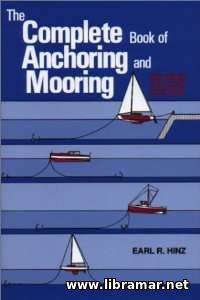 Here is one of the most popular books on anchoring and mooring addressing the widely used anchoring systems, the most effective anchoring and mooring techniques, as well as permanent moorings for the boats having a length varying from twelve to eighty feet.
The content of this perfect guidebook is covering many different types of boats including multi-hill and mono-hull boats, light sailboats, workboats and passagemakers, sportfishers and others. It is intended to serve as a comprehensive reference book for the owners of the working and recreational boats in the above stated size range. The material of the book is arranged in three big parts.
The first part of the volume is devoted to the technology of the ground tackle covering the loads at anchor, deck gear for the anchor, anchor windlass and rodes together with their selection, while the second part deals with the art of anchoring, paying attention to the human factors impacting the anchoring processes, anchoring techniques and tricks, rights and responsibilities of the people engaged in anchoring, and even storm anchoring. The last part of the volume is dealing solely with the mechanics of moorings and covers permanent moorings.
« 1 2 ... 9 10 11 12 13 14 15 » |







